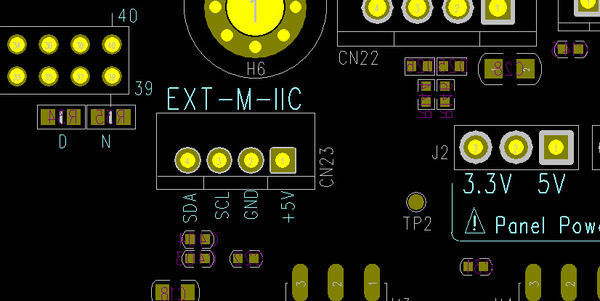How much knowledge of pad basics?
Copper pad: In the routing layer, note that it is not the inner layer. Any holes will have a copper pad larger than the drilled hole. The inner copper layer is about 14 mils, and the outer layer is larger. If there is a need for a wire connection, this can provide a "disk" that can be soldered. The top and bottom routing layers of this disk can be used to reinforce and prevent "pickup". PIN->TOP,PIN->BOTTOM.
Plating barrel: It is not like a drum after the hole is coated with solder paste.
ANTIPAD: It is an isolation ring around the hole in the PLANE LAYER used to isolate the hole and the inner electrical connection. If the hole does not need electrical connection in the inner layer, it needs ANTIPAD to isolate it. In GERBER film The ANTIPAD appears as a black or colored ring. Its inner diameter is of course greater than the outer diameter of the hole.
Now consider the plane layer. Suppose we want a 40 mil hole. We need a 7 mils wide copper ring. So the copper disk is 54 mils wide (inner diameter 27 mil). If the copper disk is not wire-connected in this layer, Then it needs a "moat" of 15 mils wide (the width depends on the breakdown criteria of the spanner). And this "moat" is "antipad". Most PCB design software will represent the inner layer as a "negative" form The place where there is copper appears to be "empty", whereas the place without copper appears to be "colored". Thus, the "antipad" here is displayed as a colored ring. (If you are in the routing layers, then the opposite) So, we can get this antipad which has a width of 54 mils and an outer width of 84 mils. The copper inside this isolation ring is connected to the "plating barrel". As shown in the figure, the third from top to bottom There is an ANTIPAD on the layer (ie, the second inner layer), indicating that the hole and the layer are not electrically connected.
Thermal relief: On the other hand, if the copper plate requires a wire connection at this layer, the isolation ring will be modified to be spoke-like to connect the inner copper of the isolation ring to the outside of the isolation ring. This is called Thermal relief. Of course, we can completely remove the isolation ring, and make the isolation ring inside and outside one. But why not do it because the easy way is to make the pad cold welding when welding, because it greatly increases the welding The thermal conductivity of the disk. So in order to ensure that the electrical connection of the pad, but also to prevent such high thermal conductivity, we will be as "spoke" shape. For the via, it is a special case. Because the via is not welding Therefore, we don't have the high thermal conductivity above. So we simply connect the inside and outside of the isolation ring completely without "spokes". Because of this conductivity is better. Of course if you have to use spokes. Not without No, but for those designs that require the use of vias to balance the heat dissipation of the PCB, it is better to use this fully-connected via! The first inner layer has electrical connections to the holes.
In a large area of ​​ground (circuit), the pins of the commonly used components are connected to it. The processing of the connection pins needs to be considered comprehensively. In terms of electrical performance, the pads of the component pins are fully connected to the copper surface. However, there are some hidden troubles in welding assembly of components such as: 1 Welding requires high-power heaters. 2 easy to cause a virtual solder joints (usually on a multi-layer board, for example, more than 10 multi-layer 20 multi-layer PCB BOARD, it may be GND has seven or eight flat layers, then the grounding pin of the via-hole device and each one you hit The GND hole is not connected to all of the seven or eight ground layers. It is fully connected when the Thermal PAD connection method is not designed. That is, the entire hole wall is in full contact with the plane in each GND plane. If the flash is designed, Cross flower pad connection, then only four flower legs are connected in each layer, the advantage of full connection is the strongest flow capacity, the bad part is that if the number of ground layers is too much, the heat dissipation is too fast, the through hole flow Tin is too fast, and vias can easily form inadvertent welds.)
So taking into account the electrical performance and process needs, made of cross-pads, commonly known as the thermal pad (Thermal pad)

Plug Terminal Block,Screw Terminal Plug,Terminal Block Plug And Socket,Plug In Terminal Block Connector
Cixi Zhongyi Electronics Factory , https://www.zybreadboard.com